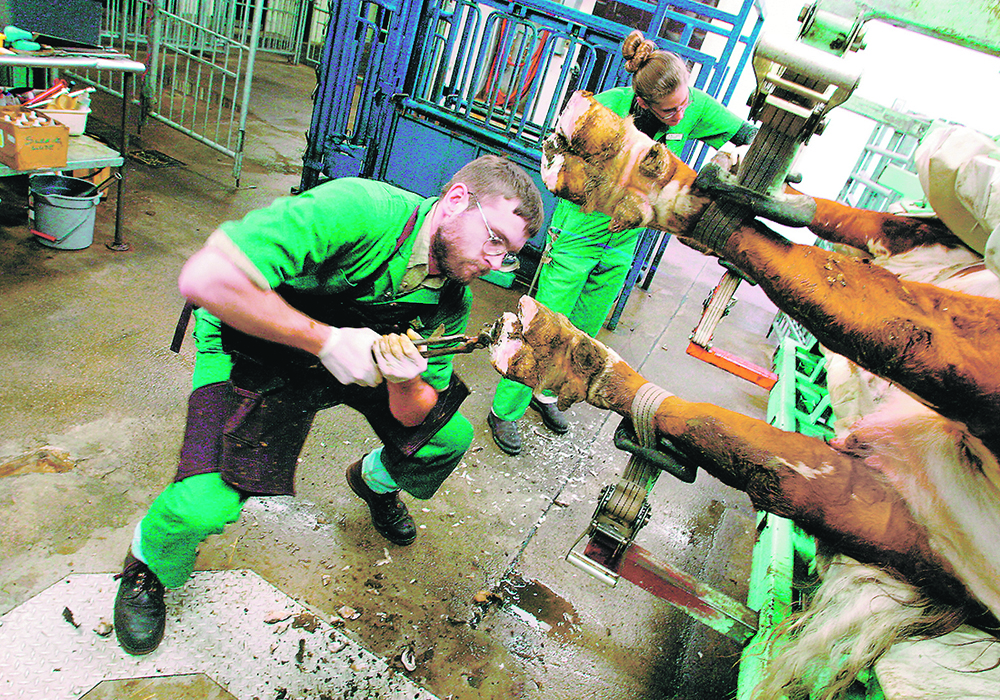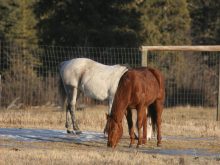If you calve in early spring, it brings cows closer to the farmyard and that’s when individual cow problems become more obvious.
Lameness is a common problem and now is a good time to attend to it.
If a hoof trimmer is brought in, lameness can be more easily identified and treatments can be started.
If the problem is determined to be a permanent issue, then it might be best to leave the cow around the yard until weaning time.
Hoof trimming will improve most lameness issues to a degree and NSAIDs can be given to speed recovery.
Read Also

Beef cattle more prone to trace mineral deficiencies
The trace mineral status of our cows and calves is a significant challenge for western Canadian producers and veterinarians.
Veterinarians often grade lameness cases from a one to five score; from barely detectable at one, to five. Many producers put these cows on their list for culling, but there are many factors to consider when you intend to keep them until they wean their calf.
Lameness is usually accompanied by pain for the animal and the more the animal moves, the more the pain it is in.
Placing affected cattle in a smaller, well-bedded pen close to water and feed provides temporary relief. As well, using NSAIDs on the advice of your veterinarian can provide relief.
Next, it is a good idea to trim hoofs to determine if the lameness is foot related, which most are, or if it is being caused higher up on the limb. Some lameness problems can be fixed permanently by trimming, some require a second corrective trim, others require surgery, and still others may require shipping or butchering. Each case is individual, unless there is an outbreak of foot rot, which isn’t that common outside of feedlots and those can be favourably treated with antibiotics.
Professional trimmers can be hard to find in certain areas. In some areas, animals may have to be transported to the trimmer. Some clinics have tilt tables and carry out medical trims on problem animals.
Dairy producers regularly use trimmers.
Preventive trimming on herd bulls and problem cows can go a long way to prevent lameness incidents in your herd.
If a lactating cow is sore and lame, it will lose condition because of not eating properly. Subsequently, it will not milk as well for her growing calf so you lose on two fronts.
Some cattle become so lame that on-farm slaughter is necessary to relieve the suffering.
Some cases can be accurately diagnosed from a distance.
It is likely foot rot if you see a swollen foot with a break between the toes and the toes are spread apart and the foot gives off a foul odour.
Other cases need their feet lifted, trimmed and examined to determine the problem. Many conditions such as sole abscesses, curled toes, sole ulcers or interdigital dermatitis can be cured with a trimming and medical treatment.
In other instances, trimming lessens the pain and the animals are more comfortable in convalescence. A block may be glued on one claw that keeps the weight off the other claw and allows healing.
A few cases may require surgery, such as a septic arthritis of the last joint, which is under the hoof. This may require a claw amputation or in select cases we ankaloze the joint and make the animal sound again.
Other animals have a large corn between the claws. Freezing and removing it may greatly improve the lameness.
On rare occasions, the foot may be X-rayed to further determine the extent of infection on the bone or to diagnose a rare lameness.
In most severe lameness cases, your veterinarian will know if surgery has a favourable prognosis. It could be curative or allow the cow to get through the grazing season and raise her calf.
Keep in mind similar things can happen to calves. The contracted tendon on calves is a perfect example where stretching of the tendons can be done under painkillers. As well rasping of the toe tips will make it easier for calves to bare weight.
Some treatments splint the legs and other times, for severe cases, it might be necessary to split some of the flexor tendons, but your veterinarian can advise on that.
Roy Lewis works as a veterinarian in Alberta.















